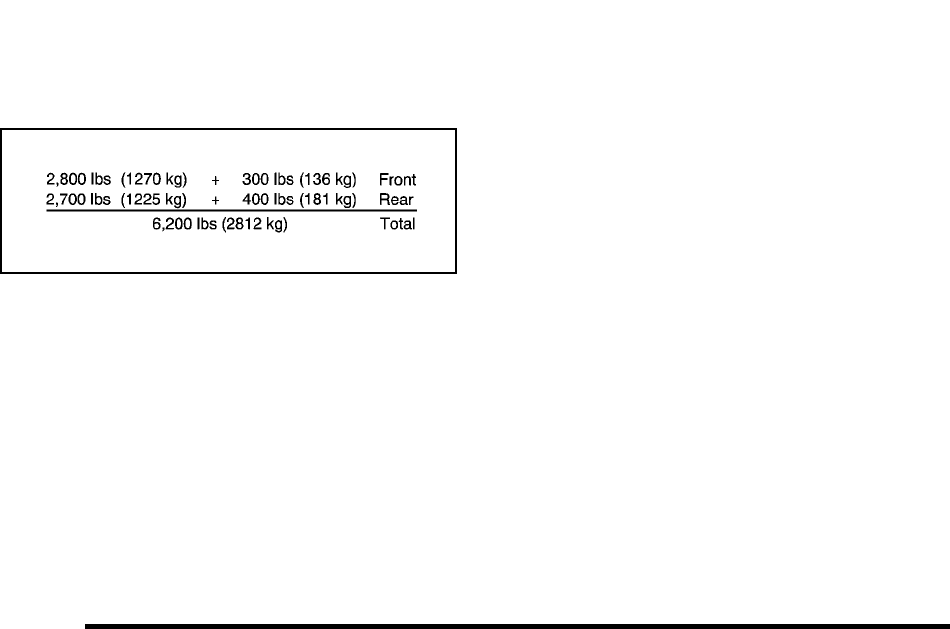
If the vehicle has many options and there is a front seat
passenger and two rear seat passengers with some
luggage and gear in the vehicle as well. 300 lbs (136 kg)
could be added to the front axle weight and 400 lbs
(181 kg) to the rear axle weight. The vehicle now
weighs:
Weight is still below 7,200 lbs (3 266 kg) and you might
think 700 additional pounds (318 kg) should be
subtracted from the trailering capacity to stay within
GCWR limits. The maximum trailer would only be
7,800 lbs (3 538 kg). You may go further and think the
tongue weight should be limited to less than 1,000 lbs
(454 kg) to avoid exceeding GVWR. But the effect on
the rear axle must still be considered. Because the rear
axle now weighs 3,100 lbs (1 406 kg), 900 lbs (408 kg)
can be put on the rear axle without exceeding RGAWR.
The effect of tongue weight is about 1.5 times the actual
weight. Dividing the 900 lbs (408 kg) by 1.5 leaves only
600 lbs (272 kg) of tongue weight that can be handled.
Since tongue weight is usually at least 10 percent of
total loaded trailer weight, expect that the largest trailer
the vehicle can properly handle is 6,000 lbs (2 721 kg).
It is important that the vehicle does not exceed any of
its ratings — GCWR, GVWR, RGAWR, Maximum
Trailer Rating or Tongue Weight. The only way to be
sure it is not exceeding any of these ratings is to weigh
the vehicle and trailer.
Total Weight on the Vehicle's Tires
Be sure the vehicle's tires are inflated to the upper limit
for cold tires. These numbers can be found on the
Certification/Tire label located at the bottom of the
center pillar on the driver's side of the vehicle, or see
Loading the Vehicle
on page 5‑31
. Make sure not to go
over the GVW limit for the vehicle, or the GAWR,
including the weight of the trailer tongue. If using a
weight distributing hitch, make sure not to go over the
rear axle limit before applying the weight distribution
spring bars.
5-52


















